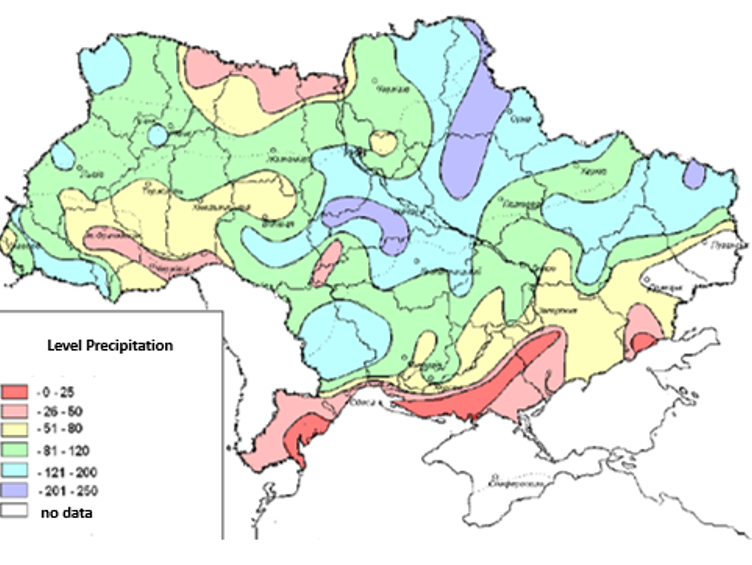Significant fluctuations in average daily temperatures were observed in Ukraine from the values typical for the beginning of May to indicators significantly lower during the ten-day period. Almost throughout the entire territory frosts were noted both on the soil surface and in some places in the air, and in many areas there were strong gusty winds.
The average ten-day regional air temperature turned out to be 1.0-2.6 °C below normal, in the Donetsk and Luhansk regions it was within normal limits and amounted to 10.5-12.6 °C, in the southern, eastern and Dnipropetrovsk regions the temperature rose to 13.3-14.0 °С.The maximum air temperature increased to 22-26 °С, and in the Odessa, Kherson, Kharkiv and Luhansk regions – to 27-28 °С.
Precipitation of varying intensity, in places with squalls and thunderstorms, with wet snow in the Carpathians was observed for 2-6 days. In the Luhansk, Kharkiv, Sumy, Poltava, Cherkasy, Kirovohrad and Transcarpathian regions their number for the ten-day period was 136-173% of the norm (19-27 mm). The amount of precipitation in the the Mykolayiv, Vinnytsya, Kyiv, Dnipropetrovsk, Chernihiv, Lviv and Volyn regions was close to the norm (85-113%). In the Zhytomyr, Khmelnytsky, Ternopil, Ivano-Frankivsk, Kherson, Zaporizhzhya and Odesa regions, the ten-day rainfall was 42-75% of the norm (9-11 mm).

During the ten-day period, unfavorable and dangerous phenomena for agricultural and fruit crops were observed – frosts on the soil surface and the height of the grass stand, in some places in the air, a decrease in relative humidity to extremely low indicators for May (18-30%), especially uncharacteristic for the western regions, strong winds quickly dried the upper layers of the soil. However, the complex of weather conditions that developed during the first decade of May, as a whole for the territory of Ukraine for winter and early spring crops, was assessed as favorable due to sufficient moisture supply and close to the optimal (or somewhat lower) level of air and soil temperature for this type of crops. The vegetation of winter and early spring crops was quite active; there was no significant lag behind the long-term average indicators.